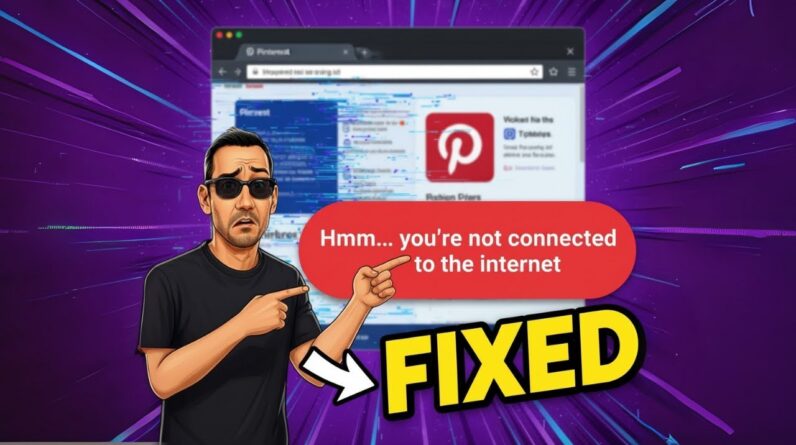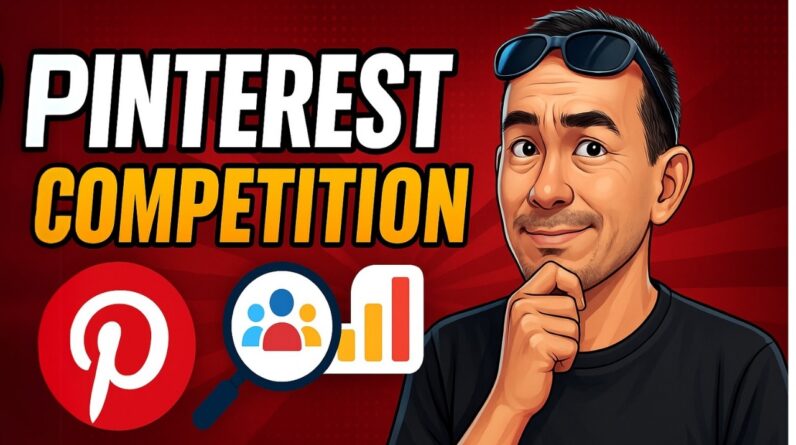
So, you’re eager to harness the power of storytelling in your video marketing endeavors? Well, you’re in luck, because this article is here to guide you on your quest! Storytelling has been a tried and true method of captivating audiences since the beginning of time, and now you too can tap into its magic. In this article, we’ll explore various techniques and strategies that will help you seamlessly integrate storytelling into your video marketing campaigns. Get ready to captivate your audience and leave a lasting impression with your brand’s narrative prowess!
Why storytelling is important in video marketing
Video marketing is an increasingly popular tool for businesses to connect with their audience and promote their brand. In today’s digital age, where attention spans are short and competition is fierce, it’s crucial to find effective ways to engage and captivate viewers. That’s where storytelling comes in. By incorporating storytelling techniques into your video marketing strategy, you can create a lasting impact on your audience and differentiate your brand from the competition.
Connecting with your audience
Storytelling is a powerful tool for connecting with your audience on a deeper level. When you tell a story, you create a sense of empathy and understanding. By sharing relatable experiences and emotions, you can establish a personal connection with your viewers. This connection allows them to relate to your brand on an emotional level, building trust and loyalty.
Making your brand memorable
If you want your brand to stand out in a crowded marketplace, you need to make it memorable. Storytelling offers the opportunity to create a narrative that resonates with your audience and leaves a lasting impression. By crafting a compelling story around your brand, you can make it more memorable and increase brand recall.
Creating emotional impact
Emotions play a significant role in decision-making. By incorporating storytelling techniques that evoke specific emotions, you can influence your audience’s perception and behavior. Whether it’s through heartwarming stories, humorous anecdotes, or inspiring narratives, emotions can create a powerful impact and drive action.
Engaging the viewer
In today’s digital landscape, attention is a precious commodity. To engage your viewers and keep them hooked, you need to tell a story that captivates their attention from the very beginning. Whether it’s through an intriguing opening, compelling visuals, or a thought-provoking conflict, storytelling can grab your viewer’s attention and keep them engaged throughout the video.
Differentiating your brand
Every brand has a story to tell. By incorporating storytelling into your video marketing strategy, you can differentiate your brand from the competition. Through a unique narrative and authentic storytelling, you can showcase what sets your brand apart and why it matters to your audience. This differentiation allows you to carve a distinct identity in the minds of consumers and stand out in a crowded marketplace.
Understanding the elements of storytelling
To effectively incorporate storytelling into your video marketing, it’s essential to understand the key elements that make up a compelling narrative.
Identifying the protagonist
Every story needs a protagonist, someone your audience can root for and connect with. In video marketing, the protagonist could be your brand, a customer, or even a fictional character. By identifying the protagonist, you can create a central character that drives the narrative and engages your audience.
Establishing the conflict or problem
A story without conflict or problem lacks tension and fails to captivate the audience. In your video marketing, it’s crucial to establish a conflict or problem that your audience can relate to. This conflict creates the driving force of your narrative and sets the stage for a compelling story.
Building tension and suspense
Tension and suspense keep your audience engaged and eager to know what happens next. By strategically building tension throughout your video, you can create anticipation and maintain interest. Whether it’s through a rising action, unexpected twists, or cliffhangers, building tension keeps your viewers hooked until the end.
Developing a resolution
Every story needs a resolution, a conclusion that ties up loose ends and provides closure. In video marketing, the resolution often involves showcasing how your product or service solves the problem or conflict established earlier. By presenting a clear resolution, you can leave your audience satisfied and inspired to take action.
Including a call to action
No storytelling is complete without a call to action. A call to action prompts your audience to take the desired next step, whether it’s making a purchase, signing up for a newsletter, or sharing the video with others. By incorporating a call to action, you can drive conversion and measure the effectiveness of your video marketing efforts.
Crafting a compelling narrative
Crafting a compelling narrative is essential to captivate your audience and make your video marketing efforts successful. Here are some key steps to consider when developing your storytelling strategy.
Defining your message or goal
Before diving into crafting your narrative, it’s crucial to define your message or goal. What do you want to communicate to your audience? Are you looking to increase brand awareness, drive sales, or educate your viewers? By having a clear message or goal in mind, you can align your storytelling efforts with your overall marketing objectives.
Analyzing your target audience
To create a compelling narrative, you need to understand your target audience inside out. Who are they? What are their needs, desires, and pain points? By conducting thorough audience research, you can tailor your story to resonate with your viewers, creating a more impactful and relevant narrative.
Creating a relatable and authentic story
Authenticity is key to successful storytelling. Your audience can easily see through inauthentic or forced narratives. Instead, strive to create a story that is relatable and authentic. Draw on real-life experiences, personal anecdotes, or customer testimonials to connect with your audience on a more genuine level.
Structuring the story arc
A well-structured story follows a story arc, consisting of an introduction, rising action, climax, falling action, and conclusion. By following this structure, you can create a narrative that unfolds naturally and keeps your viewers engaged. Begin by setting the stage, introducing the conflict, building tension, reaching a climax, and finally resolving the conflict.
Incorporating visuals and sound effectively
In video marketing, visuals and sound are powerful tools for enhancing your storytelling. Use engaging visuals, such as stunning cinematography, animations, and graphics, to bring your story to life. Additionally, carefully select background music and sound effects that complement the mood and enhance the emotional impact of your story.
Choosing the right video format
Choosing the right video format is crucial to effectively communicate your story. Consider the following formats and choose the one that aligns with your storytelling goals:
Explainer videos
Explainer videos are ideal for introducing your brand, product, or service in a concise and engaging manner. These videos typically use animations, graphics, and voiceovers to simplify complex concepts and provide a clear understanding for the audience.
Customer testimonials
Customer testimonials are powerful tools for incorporating storytelling into your video marketing. By showcasing real customers sharing their experiences and success stories, you can build trust and credibility with your audience.
Product demonstrations
Product demonstration videos allow you to showcase the features and benefits of your product or service while telling a story. By demonstrating how your offering solves a problem or meets a need, you can create a compelling narrative that resonates with your audience.
Brand storytelling
Brand storytelling videos aim to create an emotional connection between your audience and your brand. These videos often focus on the values, mission, and history of your brand, creating a narrative that evokes emotions and builds brand loyalty.
Case studies
Case study videos provide a detailed analysis of how your product or service has benefited a specific customer or client. By presenting real-life examples and showcasing the positive impact of your offering, you can create a persuasive narrative that resonates with potential customers.
Using storytelling techniques in video production
To effectively incorporate storytelling into your video production, consider the following techniques:
Narration and voiceover
Using a narrator or voiceover can add depth and emotional impact to your storytelling. A well-trained voice can evoke various emotions and guide the audience through the narrative, enhancing the overall experience.
Music and sound effects
Carefully select background music and sound effects that enhance the mood and emotional impact of your story. Music can create a sense of anticipation, evoke specific emotions, and enhance the overall viewer experience.
Cinematography and visuals
Visual storytelling is a powerful tool in video production. Use cinematography techniques to create visually stunning shots, frame your story, and bring your narrative to life. Incorporate visuals that complement the mood and tone of your story, capturing the attention of your audience.
Scriptwriting and dialogue
Craft compelling scripts and dialogue that effectively communicate your story. Well-written scripts engage your audience and allow them to connect with the characters and the narrative. Use dialogue that feels natural and authentic, reflecting the voice and values of your brand.
Character development
Character development is crucial in storytelling. Whether it’s a fictional character or a real-life customer, invest in developing characters that your audience can relate to and root for. Give your characters depth, motivations, and personalities that resonate with your target audience.
Creating a powerful opening and hook
The opening of your video plays a vital role in capturing your audience’s attention and keeping them engaged. Here are some strategies for creating a powerful opening and hook:
Capturing attention within seconds
In today’s fast-paced world, capturing attention within seconds is essential. Start your video with a visually captivating scene or an intriguing statement that immediately grabs your viewer’s attention.
Using intriguing visuals or quotes
Incorporate visually striking scenes or thought-provoking quotes at the beginning of your video to pique curiosity and draw your audience in. Give them a taste of what’s to come, leaving them eager to know more.
Starting with a relatable situation
Begin your video with a relatable situation that your audience can identify with. By tapping into their experiences or needs right from the start, you create an instant connection and engage their interest.
Highlighting the main conflict or problem
Establish the main conflict or problem your video will address right at the beginning. By clearly communicating the central issue, you create a sense of tension and curiosity, keeping your audience hooked.
Presenting a surprising or unexpected element
Incorporate a surprising or unexpected element in your opening. This could be a plot twist, an intriguing character, or a shocking statistic. By defying expectations, you captivate your audience and create intrigue.
Building emotional connections
Building emotional connections is a powerful way to create a lasting impact and drive action. Here’s how you can incorporate emotional connections in your storytelling:
Tapping into universal emotions
Humans are wired to respond to certain universal emotions. By tapping into emotions like joy, sadness, fear, or surprise, you can create an emotional connection that resonates with your audience and leaves a lasting impact.
Using personal anecdotes or stories
Sharing personal anecdotes or stories can create a sense of authenticity and relatability. By opening up and sharing real-life experiences, you invite your audience to connect with your brand and build a genuine emotional connection.
Eliciting empathy and relatability
Empathy is a powerful tool for building emotional connections. By highlighting the challenges and struggles your audience faces, you can elicit empathy and create a sense of understanding and relatability.
Utilizing humor or nostalgia
Humor and nostalgia are effective ways to evoke positive emotions and create a memorable video. By injecting humor or tapping into nostalgic moments, you create a positive association with your brand and establish an emotional connection with your audience.
Evoking a sense of inspiration or aspiration
Inspiring your audience and making them aspire for something greater is a powerful way to build emotional connections. By presenting your brand as a catalyst for positive change or personal growth, you can evoke a sense of inspiration and motivation.
Incorporating testimonials and real-life experiences
Testimonials and real-life experiences are valuable assets for incorporating storytelling into your video marketing. Here’s how you can effectively incorporate them:
Showcasing genuine customer stories
Invite your satisfied customers to share their experiences with your brand. By featuring genuine customer stories in your videos, you create a sense of authenticity and build trust with your audience.
Highlighting transformation or success
Focus on the transformation or success your customers have experienced by using your product or service. Use storytelling techniques to showcase how your offering has positively impacted their lives, creating an emotional connection with your audience.
Demonstrating the impact of your product or service
Demonstrate the tangible benefits of your product or service through real-life examples. Showcasing how your offering addresses specific problems or fulfills particular needs makes your story more relatable and persuasive.
Sharing relatable challenges and solutions
Identify relatable challenges that your audience faces and present them in your story. Then, showcase how your product or service provides an effective solution to these challenges. By mirroring their experiences, you create a sense of relevance and build trust.
Including before and after examples
Before and after examples are powerful visual representations of the impact of your product or service. Use storytelling techniques to present the journey from a problem-filled “before” to a transformed “after,” demonstrating the value of your offering.
Integrating storytelling with branding and messaging
To create a cohesive and impactful video marketing strategy, it’s important to integrate storytelling with your branding and messaging. Here’s how:
Aligning the story with your brand values
Ensure that your story aligns with your brand values and messaging. Your narrative should reflect the core principles and mission of your brand, reinforcing your brand identity and building trust with your audience.
Creating a consistent brand voice
Consistency is key to effective branding. Maintain a consistent brand voice throughout your video marketing efforts, from the scriptwriting to the visuals and editing. This consistency reinforces your brand identity and establishes familiarity with your audience.
Delivering key messages subtly
Embed your key messages and marketing objectives subtly within your storytelling. Avoid being overly promotional, but instead, let your story unfold naturally while subtly conveying your brand messages.
Using symbolism and metaphors
Symbolism and metaphors can add depth and complexity to your storytelling. Use visual cues, symbols, and metaphors that align with your brand and message, allowing your audience to interpret and connect with your story at a deeper level.
Integrating brand elements visually
Incorporate your brand elements visually within your videos. This can include your logo, color palette, typography, or other visual identifiers. These visual cues create a consistent brand experience and strengthen your brand recognition.
Measuring the impact and effectiveness of storytelling in video marketing
To evaluate and enhance the impact of storytelling in your video marketing, consider the following metrics:
Analyzing viewership and engagement metrics
Monitor viewership metrics, such as views, average watch time, and audience retention, to assess how well your videos are performing. Additionally, track engagement metrics, such as likes, comments, and shares, to gauge the level of audience interaction and interest.
Tracking conversions and lead generation
Measure the conversion rate and lead generation attributed to your storytelling videos. Analyze how well your videos are driving action, whether it’s making a purchase, signing up for a newsletter, or filling out a form.
Conducting surveys and gathering feedback
Collect feedback from your audience through surveys, polls, or direct feedback channels. Ask specific questions about the impact of your storytelling efforts and the effectiveness of your videos in conveying your message.
Monitoring social media mentions and shares
Social media can be a valuable source of insights regarding the impact of your storytelling videos. Monitor social media mentions, hashtags, and shares to gauge the level of engagement and buzz generated by your videos.
Comparing storytelling versus non-storytelling videos
Compare the performance of your storytelling videos with non-storytelling videos to assess the impact of storytelling on key metrics. Analyze the differences in engagement, conversion rates, and other relevant metrics to determine the effectiveness of storytelling in your video marketing efforts.
Incorporating storytelling into your video marketing strategy can have a profound impact on your audience engagement, brand differentiation, and overall success. By understanding the elements of storytelling, crafting a compelling narrative, choosing the right video format, and using effective storytelling techniques, you can create videos that resonate with your audience and drive action. Measure the impact and effectiveness of your storytelling efforts to continuously refine and enhance your video marketing strategy. Start harnessing the power of storytelling today and unlock the full potential of your video marketing efforts.






